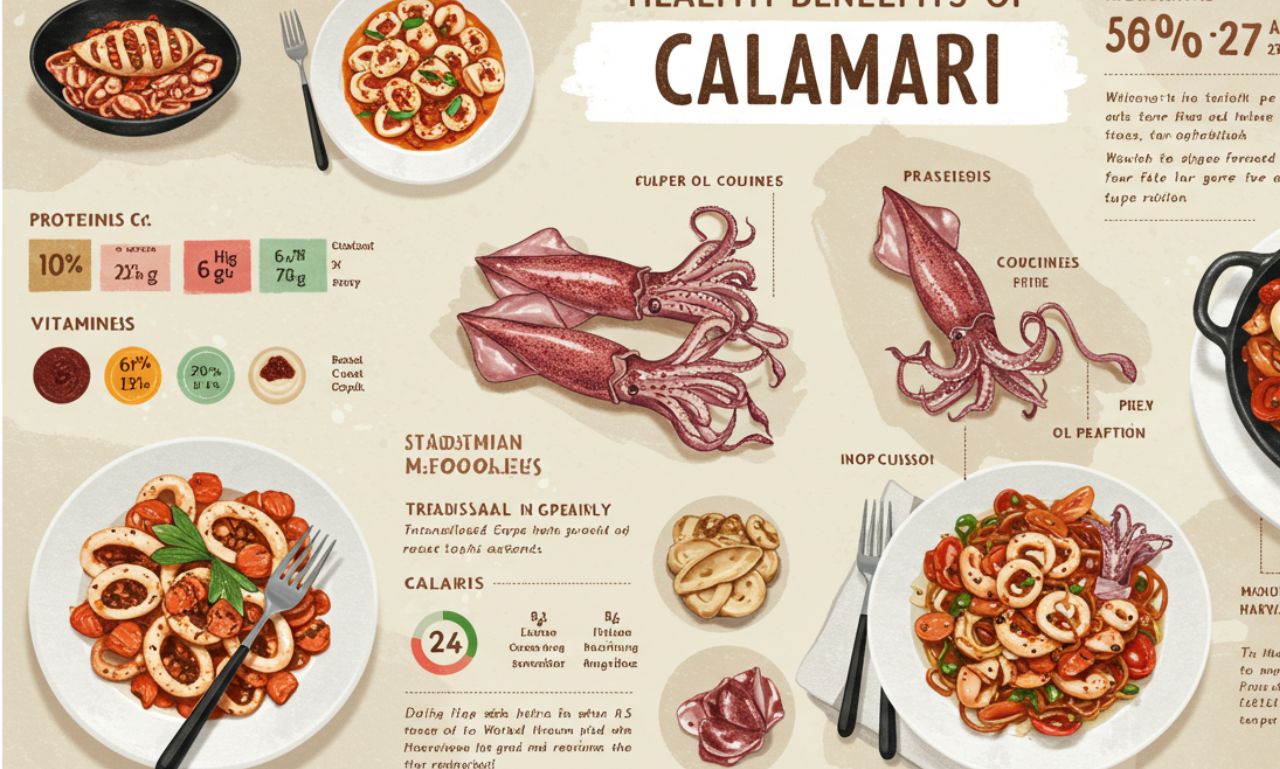Calamariere has become a buzzword in both culinary and lifestyle spaces. Traditionally linked to Mediterranean cuisine, calamariere refers to dishes, tools, or even methods revolving around squid-based preparations. Its significance stretches beyond the dining table—reaching into nutrition, culture, and even global gastronomy trends.
With its roots in ancient coastal communities, calamariere has been adapted and modernized, blending heritage with innovation. Today, it represents more than a dish—it symbolizes health, creativity, and sustainability.
What is Calamariere?
Calamariere refers to preparations or culinary creations made from squid, often grilled, fried, or stuffed. In broader contexts, the term is sometimes used to describe specialized tools for preparing squid dishes. This dual meaning makes calamariere both a gastronomic delight and a functional kitchen term.
Chefs and home cooks alike have embraced calamariere for its versatility. From seafood platters to pasta toppings, it has found a comfortable spot in global menus.
Key Benefits of Calamariere
The benefits of calamariere go beyond taste. Some of the most notable advantages include:
-
Rich nutrition: High in protein and essential minerals like zinc and copper.
-
Low fat: A lean seafood option suitable for balanced diets.
-
Versatility: Can be grilled, fried, sautéed, or served raw in some cuisines.
-
Global appeal: Loved across Mediterranean, Asian, and American cuisines.
-
Sustainability: Sourced responsibly, calamari supports sustainable fishing practices.
Calamariere in Mediterranean Cuisine
In countries like Italy, Spain, and Greece, calam-ariere is a celebrated dish. From crispy fried calamari served with lemon wedges to stuffed squid filled with rice and herbs, Mediterranean chefs have long perfected its preparation.
The Mediterranean diet, famous for its health benefits, often highlights calam-ariere as a protein-rich, heart-healthy seafood choice.
Calamariere in Asian Cuisine
Asian cuisine has also embraced calam-ariere. In Japan, squid sashimi and sushi feature prominently. In Korea, spicy stir-fried calamari is a street-food favorite. Meanwhile, in Thailand, grilled calamari skewers dipped in chili sauce bring fiery flavors to the table.
These diverse preparations show how calam-ariere adapts to local tastes and traditions.
Modern Trends in Calamariere
The world of calam-ariere is evolving with trends such as:
-
Fusion dishes combining Mediterranean and Asian flavors.
-
Gourmet presentations in fine dining.
-
Health-focused recipes with minimal oil and maximum nutrients.
-
Plant-based calam-ariere alternatives made from mushrooms or soy for vegans.
This blend of tradition and innovation ensures calam-ariere remains relevant.
How Calamariere is Prepared
The preparation of calam-ariere depends on regional preferences:
-
Grilled: Simple seasoning enhances natural flavors.
-
Fried: A crunchy favorite in beachside restaurants.
-
Stuffed: Filled with rice, cheese, or vegetables.
-
Sautéed: Cooked with garlic, herbs, and olive oil.
Chefs often stress that the secret lies in cooking time—too long, and the squid becomes chewy; just right, and it melts in your mouth.
Cultural Significance of Calamariere
In many coastal communities, calam-ariere represents more than food. It signifies tradition, gatherings, and family heritage. In Italian fishing villages, for instance, squid dishes mark festive occasions. In Asian cultures, it often symbolizes prosperity and abundance.
Calamariere in Fine Dining
Luxury restaurants across the globe are reimagining calam-ariere. Michelin-star chefs craft squid ink risottos, calamari carpaccio, and even calamari-inspired tapas. This transformation of a humble seafood dish into gourmet art demonstrates its flexibility.
Sustainability of Calamariere
With overfishing concerns rising, calam-ariere stands out as a sustainable option. Squid populations reproduce quickly, making them more resilient than other seafood species. Organizations encourage responsible fishing practices to maintain healthy stocks.
Calamariere and Health Benefits
Doctors and dietitians recommend calam-ariere for its lean protein and omega-3 fatty acids, which promote heart health, brain function, and immunity. Regular but moderate consumption supports a balanced lifestyle.
Common Misconceptions About Calamariere
Some believe calam-ariere is unhealthy due to fried preparations. However, grilled or sautéed versions are low in calories and packed with nutrients. Another misconception is that squid is tough to cook. In reality, when done correctly, it is one of the most tender seafood options.
Calamariere in Street Food
Street food vendors worldwide serve calam-ariere in creative ways. From fried calamari rings in Spain’s tapas bars to squid skewers in Bangkok night markets, it’s a favorite among casual diners.
Calamariere Pairings
The perfect calam-ariere dish often comes with ideal pairings:
-
Wines: Crisp white wines like Sauvignon Blanc or Pinot Grigio.
-
Sides: Fresh salads, roasted vegetables, or garlic bread.
-
Sauces: Lemon aioli, marinara, or spicy chili sauce.
These combinations elevate the dining experience.
Calamariere in Home Cooking
More households are experimenting with calam-ariere recipes. Easy-to-follow cooking tutorials and ready-to-cook squid make it accessible. Families now enjoy restaurant-style dishes in their kitchens.
Global Market Trends of Calamariere
Seafood market reports indicate rising demand for cala-ariere, particularly in North America and Europe. Health-conscious consumers and gourmet dining enthusiasts drive this growth.
Future of Calamariere
As plant-based alternatives gain momentum, calam-ariere is evolving too. Vegan calamari made from mushrooms and seaweed mimic traditional textures. This innovation ensures that even non-seafood eaters can enjoy calamari-inspired dishes.
Why Calamariere Stands Out
Unlike other seafood, calam-ariere combines cultural depth, nutritional value, and culinary versatility. It thrives in both traditional kitchens and modern fine dining.
Conclusion
Calamariere represents a bridge between tradition and innovation. From Mediterranean festivals to Asian street markets and fine dining tables, it continues to inspire culinary creativity. Rich in nutrition, versatile in preparation, and sustainable for the planet, is more than a dish—it is a lifestyle.
As the future unfolds, will keep adapting, offering endless possibilities for chefs, home cooks, and food lovers alike.

